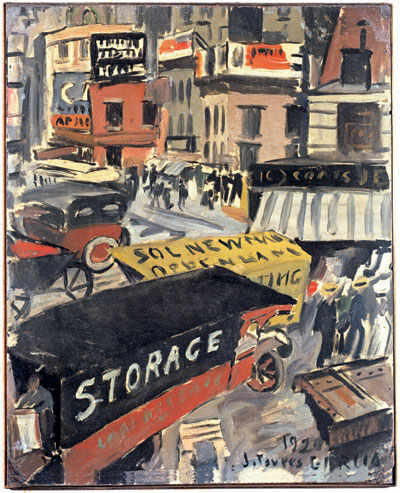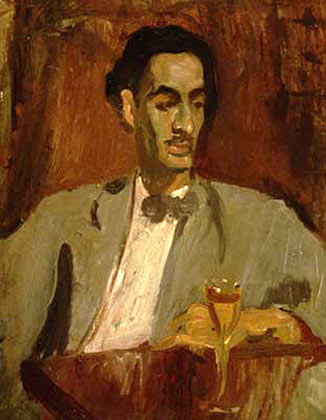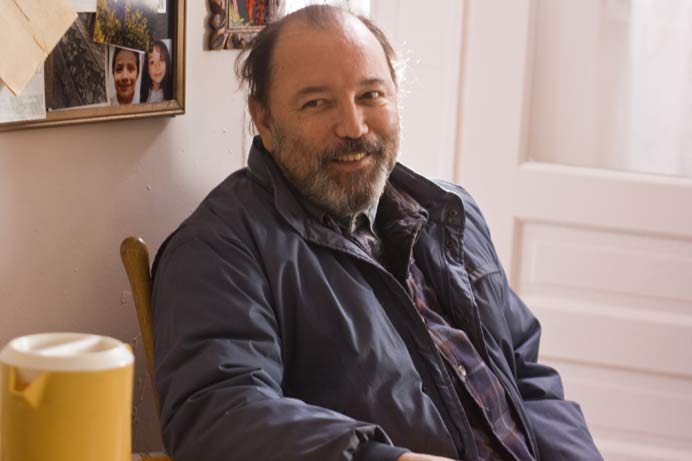
Joaquín Torres-García, “New York Street Scene (Escena de una calle de Nueva York),” oil on board, 1920
EL MUSEO DEL BARRIO
1230 Fifth Ave. at 104th St.
Tuesday – Sunday, suggested donation $6, 11:00 am – 6:00 pm
Saturday, December 19, free, 11:00 am – 9:00 pm
212-831-7272
www.elmuseo.org
For its fortieth anniversary, El Museo del Barrio reopened in October with much fanfare following an extensive renovation, enhancing its stature at the top of Museum Mile. Dedicated to Latino arts and culture, El Museo is kicking off its next era with a spectacular new exhibit, “Nexus New York: Latin / American Artists in the Modern Metropolis.” Running through February 28, the exhibition traces the history of Latin artists with direct ties to New York City – either living here, studying here, or working with New York-based artists in Europe, South America, Puerto Rico, Mexico, Cuba, and other locations. “Artists do not work in vacuums,” curator Deborah Cullen notes in her introduction to the excellent accompanying catalog. “The city itself is yet another character in the story, for it was the very nature of New York that invited and fostered such creative energy.”
“Nexus New York” links together such artists as Joaquín Torres-García and Adolph Gottlieb, Maria Martins Pereria e Souza and Marcel Duchamp, Marius de Zayas and Francis Picabia, Roberto Matta and Robert Motherwell, Al Hirschfeld and Miguel Covarrubias, and David Alfaro Siqueiros and Jackson Pollock, offering a fascinating look inside unique aspects in the development of twentieth-century contemporary art. The work of Torres-García, specifically, is nothing short of a revelation, including drawings, wooden figures, watercolors, and such dazzling paintings as “Fourteenth Street (Calle Catorce)” and “New York Street Scene (Escena de una calle de Nueva York).” There’s a reason why an entire chapter in the catalog is dedicated to reconsidering Torres-García: “Unlike many native artists who believed a ‘truly’ American art should reflect nature and the landscape,” Cecilia de Torres writes, “his New York work was all about the spirit of the modern city, rather than its realistic depiction.”

Alice Neel, “Carlos Enríquez,” oil on canvas, 1926
The centerpiece of “Nexus New York” is the extensive section devoted to the relationship between American painter Alice Neel and Cuban artist Carlos Enríquez. The couple married in 1925 and first lived in Cuba before the tragic loss of their first child doomed their relationship. Their individual portraits of their second child, Isabetta, is quite telling; in 1930, Neel paints her as a scary, doll-like figure, while Enríquez, four years later, shows her to be much more real and human. An excerpt from a documentary made by Neel’s grandson, Andrew, further looks into their life. The exhibit also delves into work by a more familiar couple, Diego Rivera and Frida Kahlo, particularly the political implications of Rivera’s aborted Rockefeller Center mural. There are also exemplary pieces by Wilfredo Lam, José Clemente Orozco, Jean Charlot, Camilo Egas, and many others.
The free Saturday program on December 19 celebrates the Three Kings with a photo booth in the courtyard, holiday storytelling with Papoleto Melendez, live music from the Children’s Aid Society Chorus and José Obando and friends, an art workshop for kids, gallery tours, a spoken word performance by the Peace Poets, the eighth annual Coquito Tasting Contest, and comedy from Latina Divas Marga Gomez and Carmelita Tropicana. In addition to “Nexus New York,” El Museo also has on view “Voces y Visiones: Four Decades Through El Museo del Barrio’s Permanent Collection,” which gives a terrific capsule history of the museum and its mission, with works going back to the Taíno Legacy through graphics and politics, traditional and devotional objects, abstraction, migration and language, and more, as well as “Raíces: The Roots of Latin Music in New York City.” And the café features some fine fare, homemade Latino plates (all under ten dollars) with an ever-changing menu; we highly recommend the spicy pulpo if it’s available.



